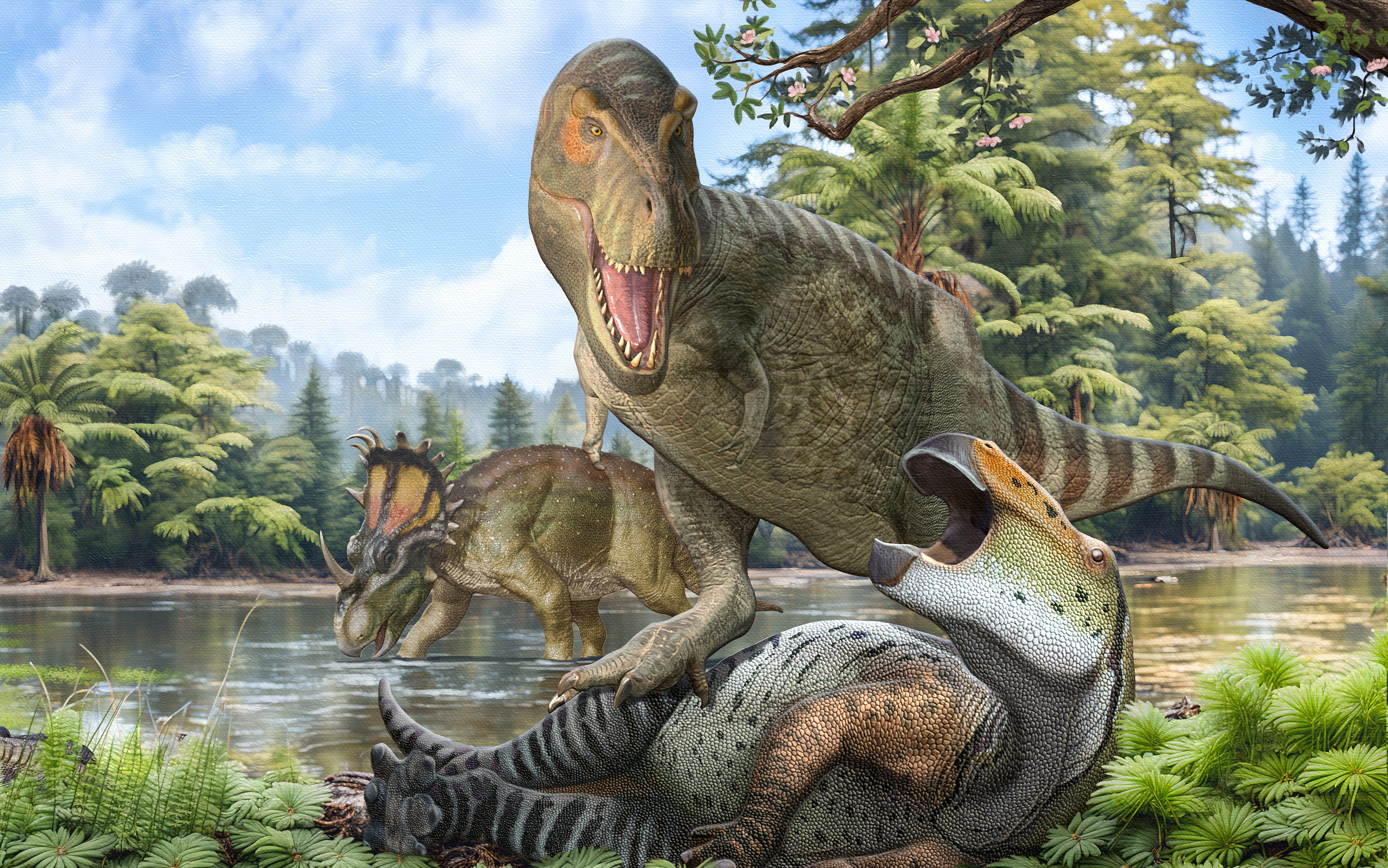Paleontologists are divided on the origin of one of our favorite dinosaurs, Tyrannosaurus rex. Some say its ancestry is firmly rooted in North America. Others aren't convinced.
An international team, led by paleoecologist Cassius Morrison from University College London, now proposes the terrible lizard's 'grandparents' may have instead migrated to North America from Asia across the Bering Strait.
"Dozens of T. rex fossils have been unearthed in North America but our findings indicate that the fossils of T. rex's direct ancestor may lie undiscovered still in Asia," Morrison says.
"This is in line with past research finding that the T. rex was more closely related to Asian cousins such as the Tarbosaurus than to North American relatives such as Daspletosaurus."
In 2024 a scientific team reported that a fossil found in New Mexico, from the T. rex relative Tyrannosaurus mcraeensis, predated its more famous counterpart by around 6 million years. They took this to mean that large-bodied tyrannosaurs had a North American origin.
Morrison's team argues this conclusion – and the age estimated for T. mcraeensis – is unreliable, due to the scarcity of specimens and current technological limitations.
Their methods for tracing Tyrannosaur family history instead involved modeling based on the fossil record (and its gaps), the dinosaur evolutionary tree and data on the climate and geography of the time. It particularly reveals how tyrannosaurids and megaraptors may have moved across the continents.
Based on these models, the team argues that although the T. rex genus likely arose in western North America – or rather the prehistoric continent Laramidia, as the land mass of the time is known – its direct ancestors likely migrated across from Asia.
"The genus Tyrannosaurus originated in Laramidia from an ancestrally Asian taxon that emigrated to North America during the Late Campanian – Early Maastrichtian," the authors write.
This isn't a new proposition: even the tiniest of T. rex's relatives left fossils that suggest a Beringian land bridge migration.

Megaraptors, they found, probably emerged in Asia around 120 million years ago, before dispersing to Europe and the southern 'supercontinent' Gondwana. But no megaraptor fossils have been found in Europe or Africa – at least, not yet.
"At the beginning of their evolutionary history, around 120 million years ago, megaraptors were part of a widespread and diverse dinosaur fauna," explains paleontologist Mauro Aranciaga Rolando, from the Bernardino Rivadavia Natural Sciences Argentine Museum.
"As the Cretaceous period progressed and the continents that once formed Gondwana began to drift apart, these predators became increasingly specialized. While in regions like Asia megaraptors were eventually replaced by tyrannosaurs, in areas such as Australia and Patagonia they evolved to become apex predators, dominating their ecosystems."
As the world's climate became cooler around 92 million years ago, both megaraptors and tyrannosaurids reached gigantic sizes. But the team found no direct correlation between climate and gigantism in these dinosaurs. Instead, they may have been better adapted to the cold, allowing them to take over the newly vacant apex predator niche in their environments.
"They likely grew to such gigantic sizes to replace the equally giant carcharodontosaurid theropods that went extinct about 90 million years ago," says UCL paleontologist Charlie Scherer. "This extinction likely removed the ecological barrier that prevented tyrannosaurs from growing to such sizes."
The research is published in Royal Society Open Science.
